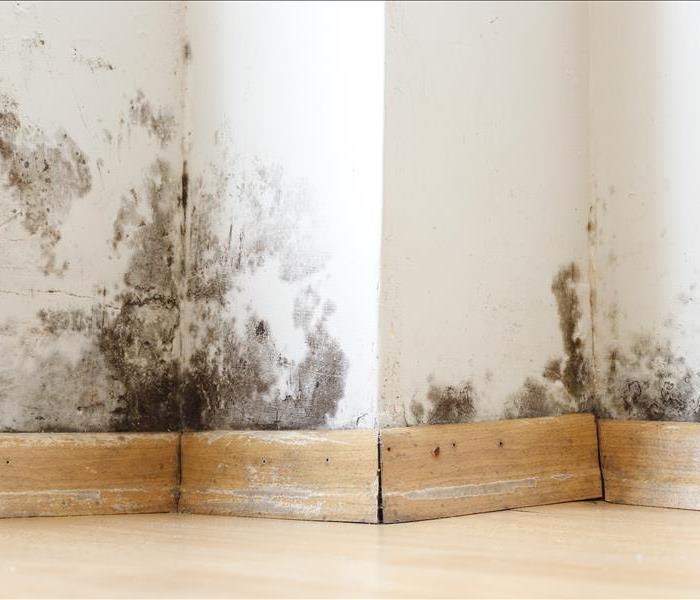
Seattle, WA Mold Damage Remediation
From the Burke Museum of Natural History and Culture to venues like Lumen Field or T-Mobile Park, mold damage is not selective in its damage to Puget Sound area structures.
Do Mold Inspections Make Remediation More Efficient?
It can be beneficial for our technicians to inspect the property for the effects that mold has on hosting materials. A thorough assessment can show the appropriate remediation response to protect the property and its contents from further damage.
Is Surface Cleaning Best for Seattle Mold Damage?
One of the first strategies that our professionals will implement when cleaning and removing mold damage is to utilize effective antimicrobial and sporicidal products in our inventory to eradicate surface mold and serve as an inhibiting agent for further colonization. When surface cleaning is not possible, we have more aggressive tactics like:
- Sanding
- Media blasting
- Controlled demolition
What Mold Remediation Helps Seattle Homes?
With several possible mold remediation techniques, our professionals can implement in a home, choosing the right approach is a product of a thorough inspection of the house and what effect mold has had on the structure. With the frequencies of microbial development in specific areas of the house, unique strategies exist to overcome organisms threatening the grounds, regardless of where this damage might be, such as:
- basement mold
- black mold
- attic mold
- bathroom mold
See our main service page for more remediation and mold removal strategies for homes and businesses.
SERVPRO of Seattle Northeast
- 24-Hour Emergency Service
- Faster to Any Size Disaster
- Highly Trained Mold Remediation Technicians
- Specialized Mold Remediation Equipment
- A Trusted Leader in the Restoration Industry
- Locally Owned and Operated
If You See Signs of Mold, Call Us Today – (206) 362-9295
Understanding Mold
Confusion and misunderstanding surround the topic of mold and mold remediation. Some restoration businesses even make claims to remove all mold from a building. This is a fallacy. Mold spores occur naturally almost everywhere, both indoors and outdoors. These microscopic spores float along in the air and can enter a home or business through windows and HVAC systems. Consider these facts:
- Mold is present almost everywhere, indoors and outdoors.
- Mold spores are microscopic and float along in the air, and may enter your home through windows, doors, or AC/heating systems or even hitch a ride indoors on your clothing or on a pet.
- Mold spores thrive on moisture. Mold spores can quickly grow into colonies when exposed to water. These colonies may produce allergens, irritants, and toxins.
- Before mold remediation can begin, any sources of water or moisture must be addressed. Otherwise, the mold may return.
- Mold often produces a strong, musty odor and can lead you to possible mold problem areas.
- Even higher-than-normal indoor humidity can support mold growth. Keep indoor humidity below 45 percent.
Faster to Any Size Disaster
Mold spreads quickly, so a minor mold infestation can quickly escalate into a major problem. We’re dedicated to responding immediately when you contact us. A fast response lessens the damage, limits further damage, and reduces cost.
Locally Owned, with National Resources
We live and work in this community too; we might even be neighbors. As a locally owned and operated business, SERVPRO of Seattle Northeast is close by and ready to respond to your mold damage emergency. We are proud to be an active member of the Seattle community and want to pitch in and help make our community the best it can be.
We are proud to serve our local communities:
- Seattle, WA
- Lake City, WA
- University District, WA
- Wedgwood, WA
- Pinehurst, WA
- Meadowbrook, WA
- Sand Point, WA
- Victory Heights, WA
- Laurelhurst, WA
- Matthews Beach, WA
Highly Trained Water and Mold Restoration Specialists
We are trained mold damage specialists who get started quickly to get your home or business back to normal, with specific training and certifications to handle your restoration needs. Learn about our water and mold training and certificates.
The Mold Remediation Process
Every mold damage scenario is different and requires a unique solution, but the general mold remediation process stays the same. The steps listed below illustrate our “typical” process:
Step 1: Emergency Contact - (206) 362-9295
We’re available 24 hours, 7 days a week to answer your phone call. Our consultant will guide you through this process, asking questions that will allow us to better understand your situation and to determine the needed equipment and personnel.
Step 2: Inspection and Mold Damage Assessment
We determine the scope of the mold damage by carefully inspecting your property for visible signs of mold. Since mold can be hidden, we use various technologies to detect mold and hidden water sources.
Step 3: Mold Containment
Our professionals use various containment procedures to prevent the spread of mold. We may use advanced containment procedures like negative air chambers to isolate the contaminated area with physical barriers and negative air pressure to keep the mold spores from spreading during the cleanup process. All fans and heating and cooling systems will be turned off to prevent the spread of mold.
Step 4: Air Filtration
We use powerful air scrubbers, HEPA vacuums, and other filtration equipment to remove microscopic mold spores out of the air. This air filtration process and our mold containment process help to prevent the spread of these mold spores while the mold remediation is in process.
Step 5: Removing Mold and Mold-Infested Materials
The mold remediation process depends on the amount of mold growth and the types of surfaces on which the mold appears. We’ll use antifungal and antimicrobial treatments to eliminate mold colonies and to help prevent new colonies from forming. It may be necessary to remove and dispose of mold-infested porous materials, like drywall and carpeting, to remediate heavy mold growth.
Step 6: Cleaning Contents and Sanitizing
We clean your furniture, decorative items, curtains, clothing, and other restorable items affected by mold, using a variety of cleaning techniques to clean and disinfect your belongings. We’re also trained to remove odors and provide deodorization using fogging equipment.
Step 7: Restoration
During the remediation process, it’s often necessary to remove porous building materials like subfloors, drywall, and carpet. The restoration step returns your Seattle, WA home or business back to normal. Depending on the severity of mold damage, the restoration step may involve minor repairs, such as replacing drywall, or it may involve a substantial reconstruction project.
SERVPRO knows Mold
SERVPRO of Seattle Northeast has the expertise to make any mold problem a memory in Seattle, WA. We have seen the distress homeowners experience upon finding mold at their property. SERVPRO can help calm any mold concerns. Our trained professionals have the equipment and knowledge it takes to properly remediate mold. Call (206) 362-9295 - We are ready and waiting to respond to your emergency.






 24/7 Emergency Service
24/7 Emergency Service



